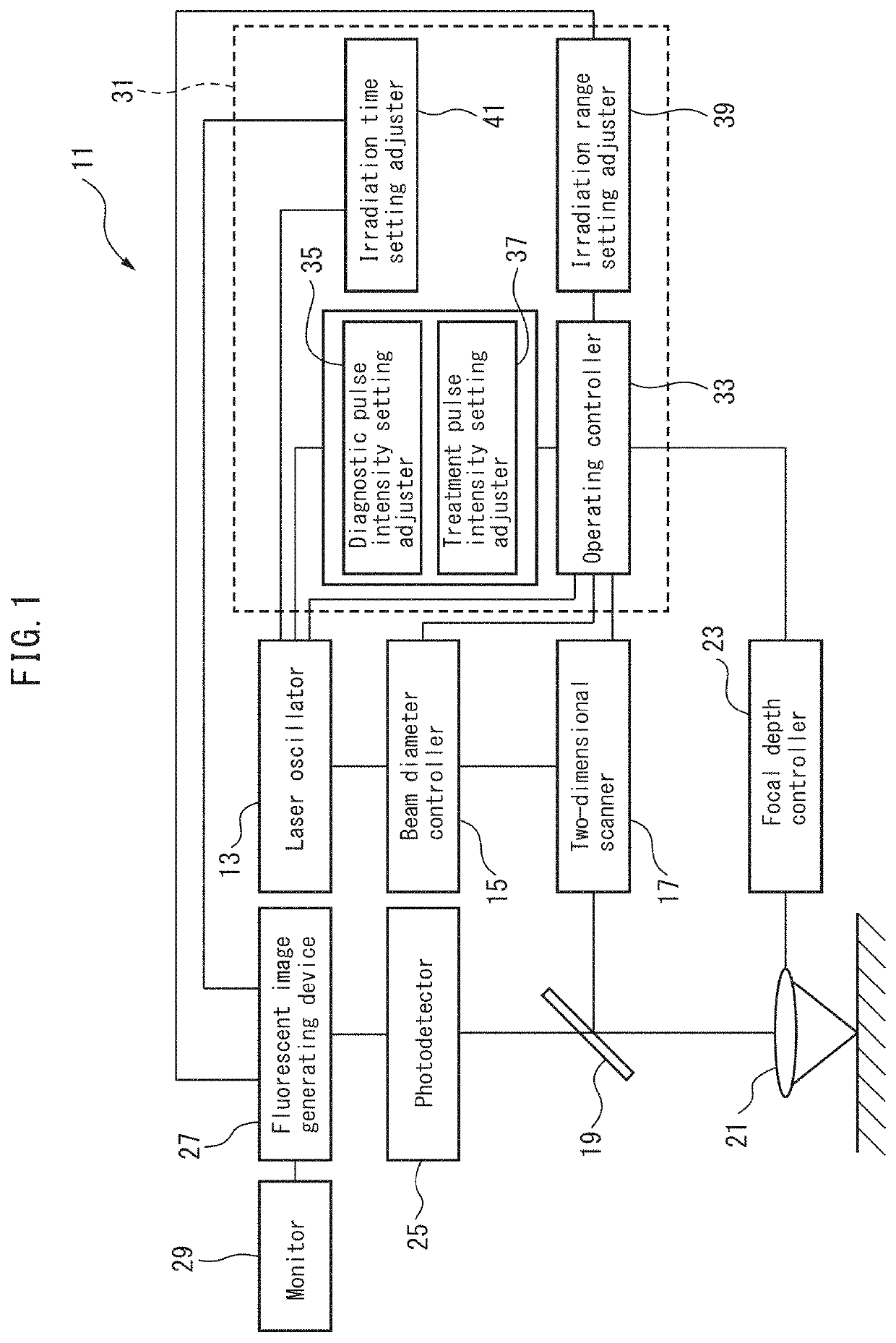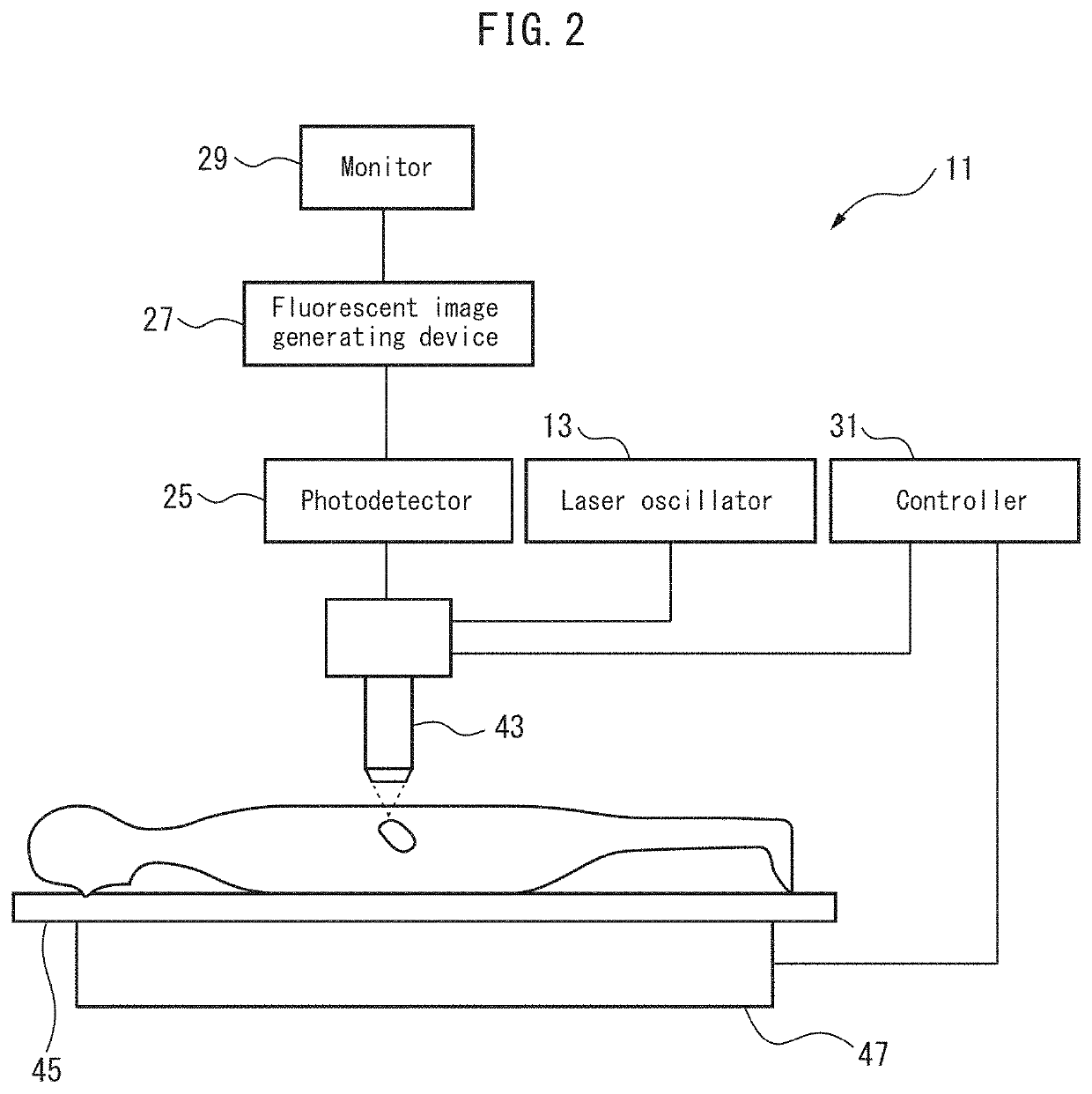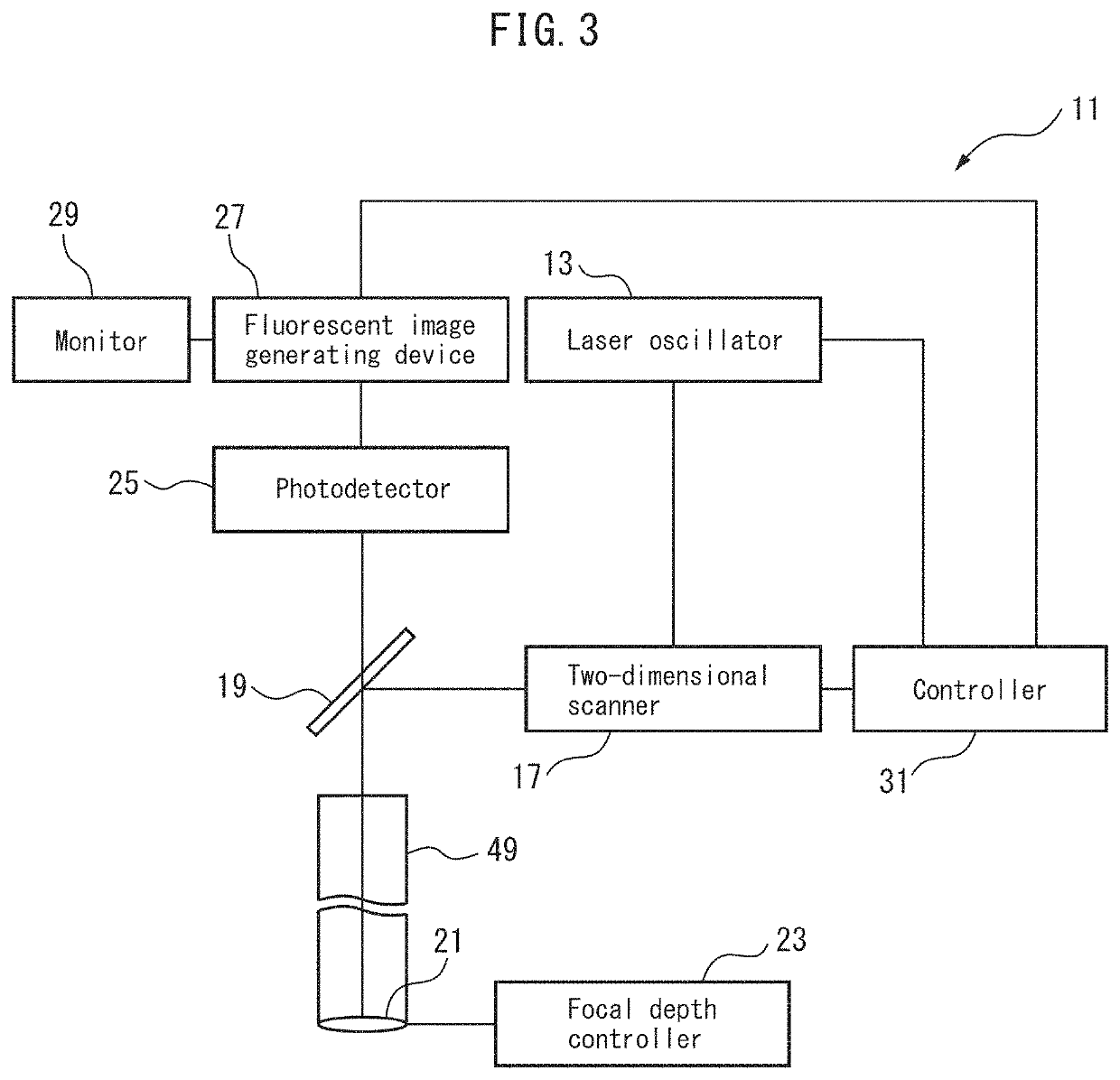Vital stain
a vital stain and fluorescent dye technology, applied in the field of vital dye, can solve the problems of difficult endoscopy treatment, limited detection period of early cancer, and difficult to detect cancers of this size, so as to reduce the generation of ultraviolet rays in tissues, reduce the damage, and identify quickly
- Summary
- Abstract
- Description
- Claims
- Application Information
AI Technical Summary
Benefits of technology
Problems solved by technology
Method used
Image
Examples
example 1
1. Evaluation of Dye Compound Stainability
[0205]Drinking water containing 2% (w / v) dextran sodium sulfate (DSS) was given to 8-week-old C57B6 mice (male, approximately 20 g) for 7 days. After intraperitoneal injection of 0.2 ml of 5% chloral hydrate for anesthesia, the mouse abdominal wall was incised vertically to about 1 cm, and the gastrointestinal tract was raised over the abdominal wall to about 1 cm. Blood flow to the gastrointestinal tract was maintained during this time by the blood vessel flowing into the mesenteric attachment site. The gastrointestinal tract was incised vertically to about 1 cm on opposite side of the mesenteric attachment site, including the tunica muscularis and mucosa. The opposite side of the mesenteric attachment site was incised in order to prevent severance and damage of the blood vessel and minimize bleeding. When the incision site of the gastrointestinal tract was opened vertically, the mucosal surface of the gastrointestinal tract, as the food ch...
example 2
[0218]In vitro assay of MDCK-RasV12 cancerized cell small aggregates as a very early cancer model
(Materials)
[0219]MDCK normal cells; canine renal tubular epithelial cell-derived cell line.[0220]MDCK-GFP-RasV12 cells that express GFP-RasV12 which is the green fluorescent protein GFP fused to the constitutively activated oncogene product RasV12 (RasV12 being Ras with the 12th amino acid residue glycine replaced by valine, as a mutation found in 30% to 40% of colon cancers).[0221]DMEM (high glucose) with Phenol Red (Wako Pure Chemical Industries, Ltd.)[0222]DMEM (high glucose) without Phenol Red (Wako Pure Chemical Industries, Ltd.)[0223]Tetracycline System Approved Fetal bovine serum (Clontech)[0224]Penicillin / Streptomycin (×100) (Nacalai Tesque, Inc.)[0225]GlutaMax (×100) (Invitrogen)[0226]Trypsin (0.25%) (no phenol red, Invitrogen)+EDTA (3 mM) (Nacalai Tesque, Inc.)[0227]Zeocin (100 mg / ml, InvivoGen)[0228]Blasticidin (10 mg / ml, InvivoGen)[0229]Tetracycline (SIGMA) / 100% ethanol (100 ...
example 3
1. Evaluation of Dye Compound Stainability
[0242]Drinking water containing 2% (w / v) dextran sodium sulfate (DSS) was given to 8-week-old C57B6 mice (male, approximately 20 g) for 7 days. After intraperitoneal injection of 0.2 ml of 5% chloral hydrate for anesthesia, the mouse abdominal wall was incised vertically to about 1 cm, and the gastrointestinal tract was raised over the abdominal wall to about 1 cm. Blood flow to the gastrointestinal tract was maintained during this time by the blood vessel flowing into the mesenteric attachment site. The gastrointestinal tract was incised vertically to about 1 cm on the opposite side of the mesenteric attachment site, including the tunica muscularis and mucosa. The opposite side of the mesenteric attachment site was incised in order to prevent severance and damage of the blood vessel and minimize bleeding. When the incision site of the gastrointestinal tract was opened vertically, the mucosal surface of the gastrointestinal tract, as the foo...
PUM
| Property | Measurement | Unit |
|---|---|---|
| diameter | aaaaa | aaaaa |
| diameter | aaaaa | aaaaa |
| wavelength | aaaaa | aaaaa |
Abstract
Description
Claims
Application Information
 Login to View More
Login to View More - R&D
- Intellectual Property
- Life Sciences
- Materials
- Tech Scout
- Unparalleled Data Quality
- Higher Quality Content
- 60% Fewer Hallucinations
Browse by: Latest US Patents, China's latest patents, Technical Efficacy Thesaurus, Application Domain, Technology Topic, Popular Technical Reports.
© 2025 PatSnap. All rights reserved.Legal|Privacy policy|Modern Slavery Act Transparency Statement|Sitemap|About US| Contact US: help@patsnap.com



